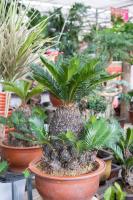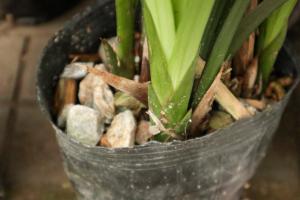How to Use a Plant Pot Without Holes
If you have a beautiful plant pot that does not have any drainage holes, don't worry! There are still ways you can use it to house your plants. In this article, we will share some useful tips on how to use a plant pot without holes.
1. Add a Layer of Gravel
One of the easiest ways to use a plant pot without holes is to add a layer of gravel at the bottom of the pot. This layer will act as a drainage system, allowing excess water to flow through the gravel and away from the roots of your plant.
To add a layer of gravel, simply fill the bottom of your plant pot with about one to two inches of small rocks or pebbles. This will help create space for water to escape and keep your plant's roots healthy and happy.
2. Use a Plastic Liner
If you want to use a plant pot without holes and still keep your plant's roots safe, consider using a plastic liner. You can find liners at most nurseries or online shops that sell gardening supplies.
To use a plastic liner, simply place it inside your plant pot before adding soil and your plant. This will create a barrier between the soil and the pot, preventing water from seeping through and damaging your furniture or floors.
3. Water Carefully
When you are using a plant pot without holes, it's important to be careful when watering your plants. Overwatering can easily become a problem, as the excess water does not have anywhere to go.
To avoid overwatering, make sure to check the soil moisture level regularly. Stick your finger about an inch into the soil, and if it feels dry, it's time to water. Make sure to water slowly and in small amounts, allowing the water to absorb into the soil before adding more.
4. Choose Plants That Need Less Water
If you are worried about overwatering your plants, it's a good idea to choose plants that require less moisture. Succulents, cacti, and other drought-tolerant plants are great options for plant pots without holes.
These types of plants store water in their leaves or stems, making them more resistant to drought. They also do not require as much watering, which can be a big advantage when using a plant pot without drainage holes.
Conclusion
Overall, using a plant pot without holes is not as difficult as it may seem. With these tips, you can enjoy your favorite plants even if your pot does not have any drainage holes. Remember to add a layer of gravel, use a plastic liner, water carefully, and choose plants that require less moisture. By following these steps, you can keep your plants healthy and happy in any type of pot!

 how many times do yo...
how many times do yo... how many planted tre...
how many planted tre... how many pine trees ...
how many pine trees ... how many pecan trees...
how many pecan trees... how many plants comp...
how many plants comp... how many plants can ...
how many plants can ... how many plants and ...
how many plants and ... how many pepper plan...
how many pepper plan...
































